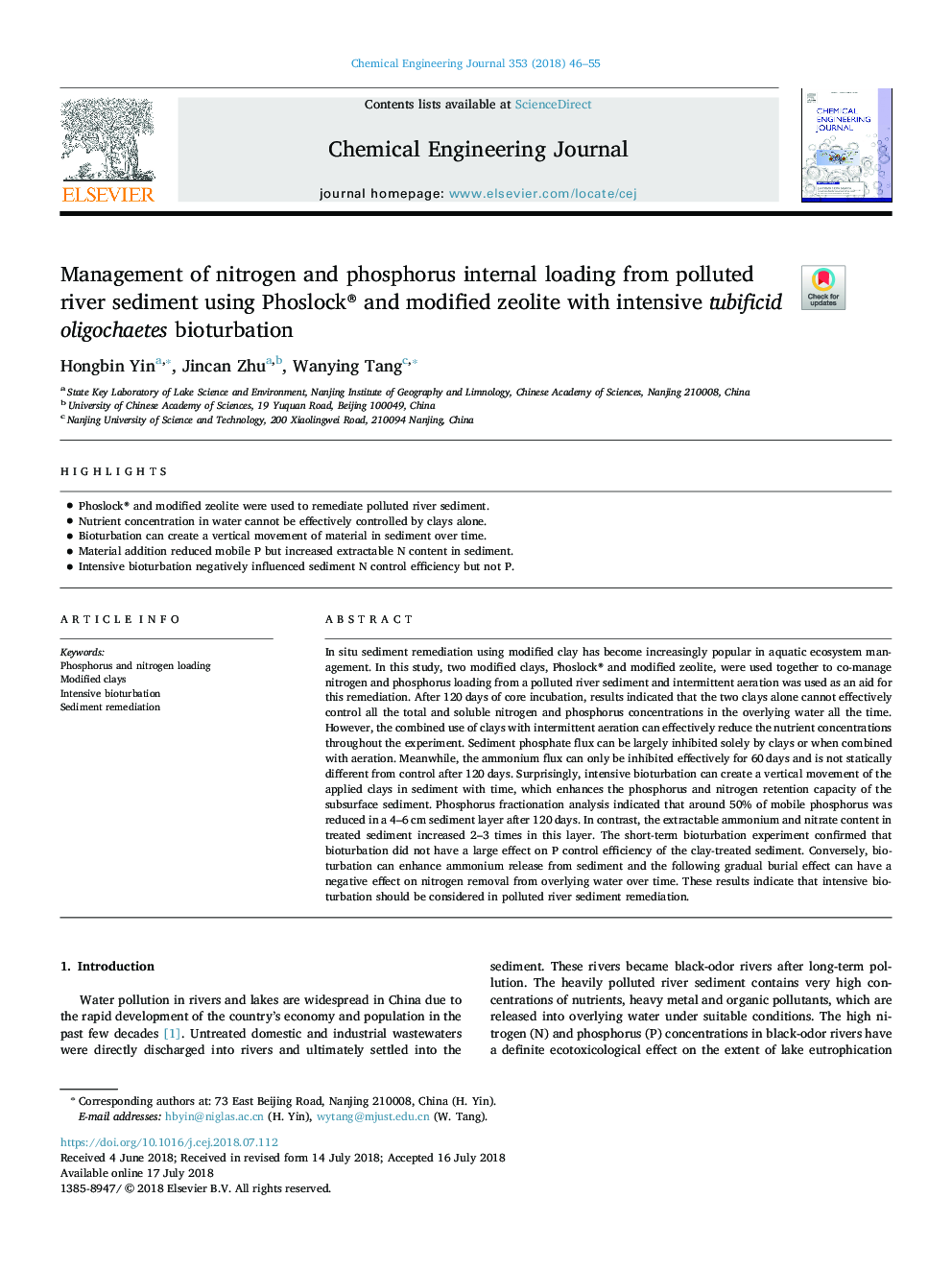| کد مقاله | کد نشریه | سال انتشار | مقاله انگلیسی | نسخه تمام متن |
|---|---|---|---|---|
| 6577973 | 1422925 | 2018 | 10 صفحه PDF | دانلود رایگان |
عنوان انگلیسی مقاله ISI
Management of nitrogen and phosphorus internal loading from polluted river sediment using Phoslock® and modified zeolite with intensive tubificid oligochaetes bioturbation
دانلود مقاله + سفارش ترجمه
دانلود مقاله ISI انگلیسی
رایگان برای ایرانیان
موضوعات مرتبط
مهندسی و علوم پایه
مهندسی شیمی
مهندسی شیمی (عمومی)
پیش نمایش صفحه اول مقاله

چکیده انگلیسی
In situ sediment remediation using modified clay has become increasingly popular in aquatic ecosystem management. In this study, two modified clays, Phoslock® and modified zeolite, were used together to co-manage nitrogen and phosphorus loading from a polluted river sediment and intermittent aeration was used as an aid for this remediation. After 120â¯days of core incubation, results indicated that the two clays alone cannot effectively control all the total and soluble nitrogen and phosphorus concentrations in the overlying water all the time. However, the combined use of clays with intermittent aeration can effectively reduce the nutrient concentrations throughout the experiment. Sediment phosphate flux can be largely inhibited solely by clays or when combined with aeration. Meanwhile, the ammonium flux can only be inhibited effectively for 60â¯days and is not statically different from control after 120â¯days. Surprisingly, intensive bioturbation can create a vertical movement of the applied clays in sediment with time, which enhances the phosphorus and nitrogen retention capacity of the subsurface sediment. Phosphorus fractionation analysis indicated that around 50% of mobile phosphorus was reduced in a 4-6â¯cm sediment layer after 120â¯days. In contrast, the extractable ammonium and nitrate content in treated sediment increased 2-3 times in this layer. The short-term bioturbation experiment confirmed that bioturbation did not have a large effect on P control efficiency of the clay-treated sediment. Conversely, bioturbation can enhance ammonium release from sediment and the following gradual burial effect can have a negative effect on nitrogen removal from overlying water over time. These results indicate that intensive bioturbation should be considered in polluted river sediment remediation.
ناشر
Database: Elsevier - ScienceDirect (ساینس دایرکت)
Journal: Chemical Engineering Journal - Volume 353, 1 December 2018, Pages 46-55
Journal: Chemical Engineering Journal - Volume 353, 1 December 2018, Pages 46-55
نویسندگان
Hongbin Yin, Jincan Zhu, Wanying Tang,